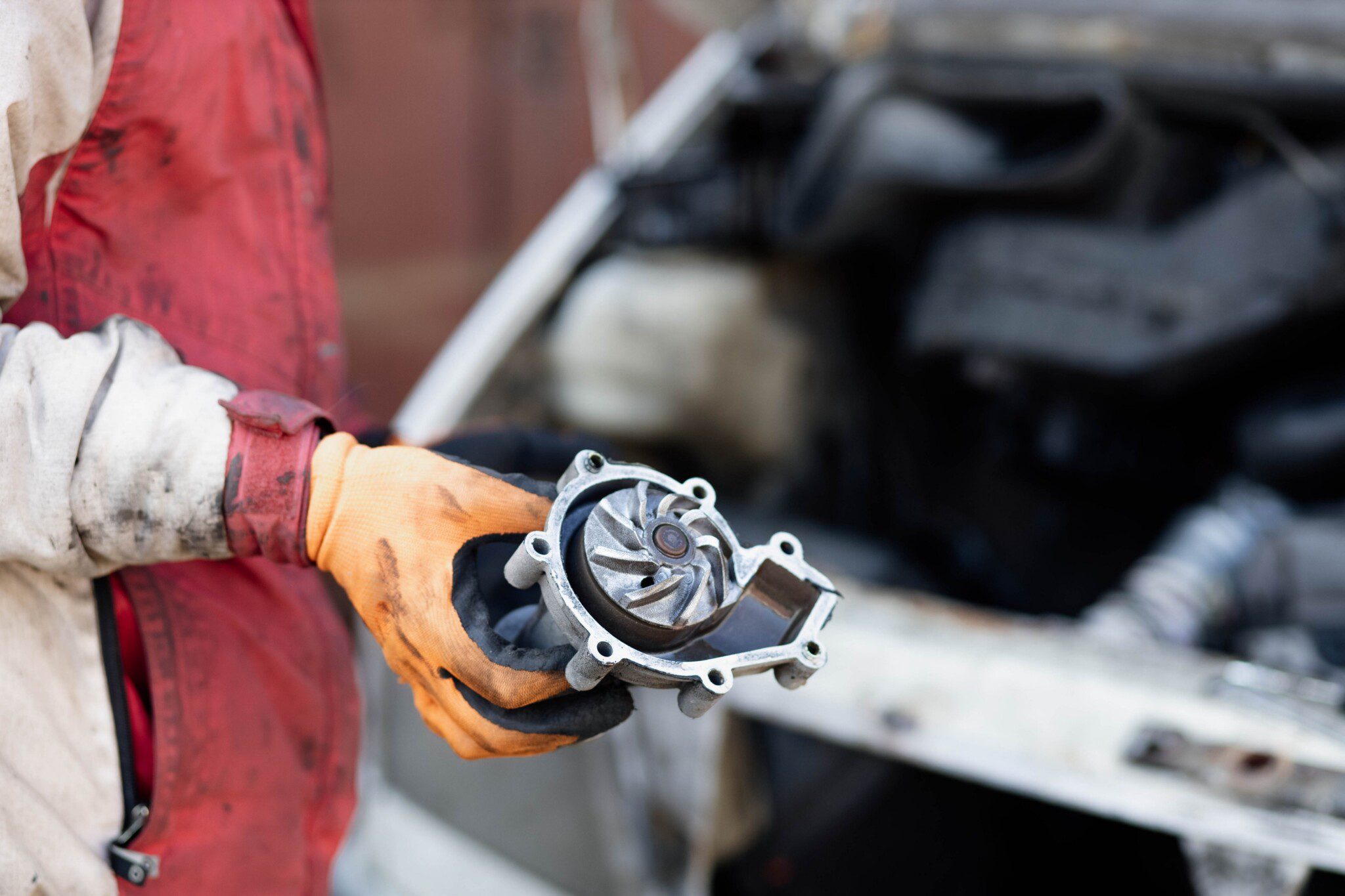A crucial element in a vehicle’s cooling system is the car water pump, which ensures that the engine operates at optimal temperatures. Without a properly functioning car water pump, the engine could overheat, leading to severe damage and costly repairs. This article will delve into the description, functionality, maintenance, and other essential aspects of the car water pump.
Description of a car water pump
The car water pump is a mechanical device responsible for circulating coolant throughout the engine’s cooling system. Typically, it is located at the front of the engine and is driven by the engine’s timing belt or serpentine belt. The pump consists of several key components, including a housing, an impeller, a pulley, and a shaft with bearings.
- Housing: The outer shell usually made of cast iron or aluminum, encases all the internal components and provides protection.
- Impeller: This is a rotor located inside the housing. It has blades or vanes that spin rapidly to push the coolant through the engine.
- Pulley: Attached to the pump’s shaft, the pulley is driven by the engine’s belt, enabling the impeller to rotate.
- Shaft and bearings: The shaft, supported by bearings, connects the impeller to the pulley, ensuring smooth rotation and minimal friction.
Functionality of the car water pump
The primary function of the water pump is to maintain a continuous flow of coolant from the radiator to the engine and back. Here’s how it works:
- Coolant circulation: The impeller inside the car water pump spins, creating a centrifugal force that pushes the coolant outward through the pump’s outlet. This action draws coolant from the radiator into the pump.
- Engine cooling: The coolant absorbs heat from the engine as it flows through the engine block and cylinder head. This heat is then transferred back to the radiator, where it is dissipated into the air.
- Temperature regulation: By maintaining a constant flow of coolant, the pump ensures that the engine operates within its optimal temperature range, preventing overheating and maintaining efficient performance.

Maintenance of a car water pump
Regular maintenance of this pump is essential to ensure its longevity and reliable performance. Here are some maintenance tips:
- Regular inspection: Periodically check the pump for signs of wear or damage. Look for coolant leaks, unusual noises, or visible cracks in the housing. Early detection of issues can prevent more severe problems.
- Coolant level and quality: Ensure that the coolant level is always within the recommended range. Use the appropriate type of coolant specified by the vehicle manufacturer. Contaminated or low coolant can cause the water pump to fail.
- Belt condition: The timing belt or serpentine belt that drives the pump should be in good condition. Inspect the belt for signs of wear, cracks, or fraying, and replace it if necessary. A worn or broken belt can lead to the water pump malfunctioning.
- Professional servicing: Follow the vehicle manufacturer’s recommended service intervals. During these services, a professional mechanic will check the entire cooling system, including the car water pump, to ensure everything is functioning correctly.
Signs of a failing
Recognizing the signs of a failing car water pump can help prevent severe engine damage. Here are some common symptoms to watch out for:
- Coolant leaks: If you notice puddles of coolant under the vehicle or around the engine bay, it could indicate a leak from the water pump. Coolant leaks often appear as green, orange, or pink fluid, depending on the type of coolant used.
- Overheating engine: An overheating engine is a clear sign that the car water pump might be failing. If the pump is not circulating coolant effectively, the engine temperature will rise, potentially leading to overheating.
- Whining or grinding noises: Unusual noises coming from the front of the engine could indicate a problem with the water pump’s bearings or impeller. These noises often become more pronounced as the engine speed increases.
- Steam from the radiator: If you see steam coming from the radiator or under the hood, it could be a sign that the coolant is not circulating properly, causing it to boil and turn into steam. This can be due to a malfunctioning water pump.
Conclusion
This pump plays a vital role in maintaining the engine’s temperature and ensuring smooth operation. Understanding its description, functionality, and maintenance requirements is essential for every vehicle owner. Regular inspections, proper maintenance, and timely replacement of the car water pump can prevent costly repairs and extend the lifespan of your vehicle. By being aware of the signs of a failing water pump, you can take proactive measures to address issues early, ensuring your engine remains in optimal condition.

